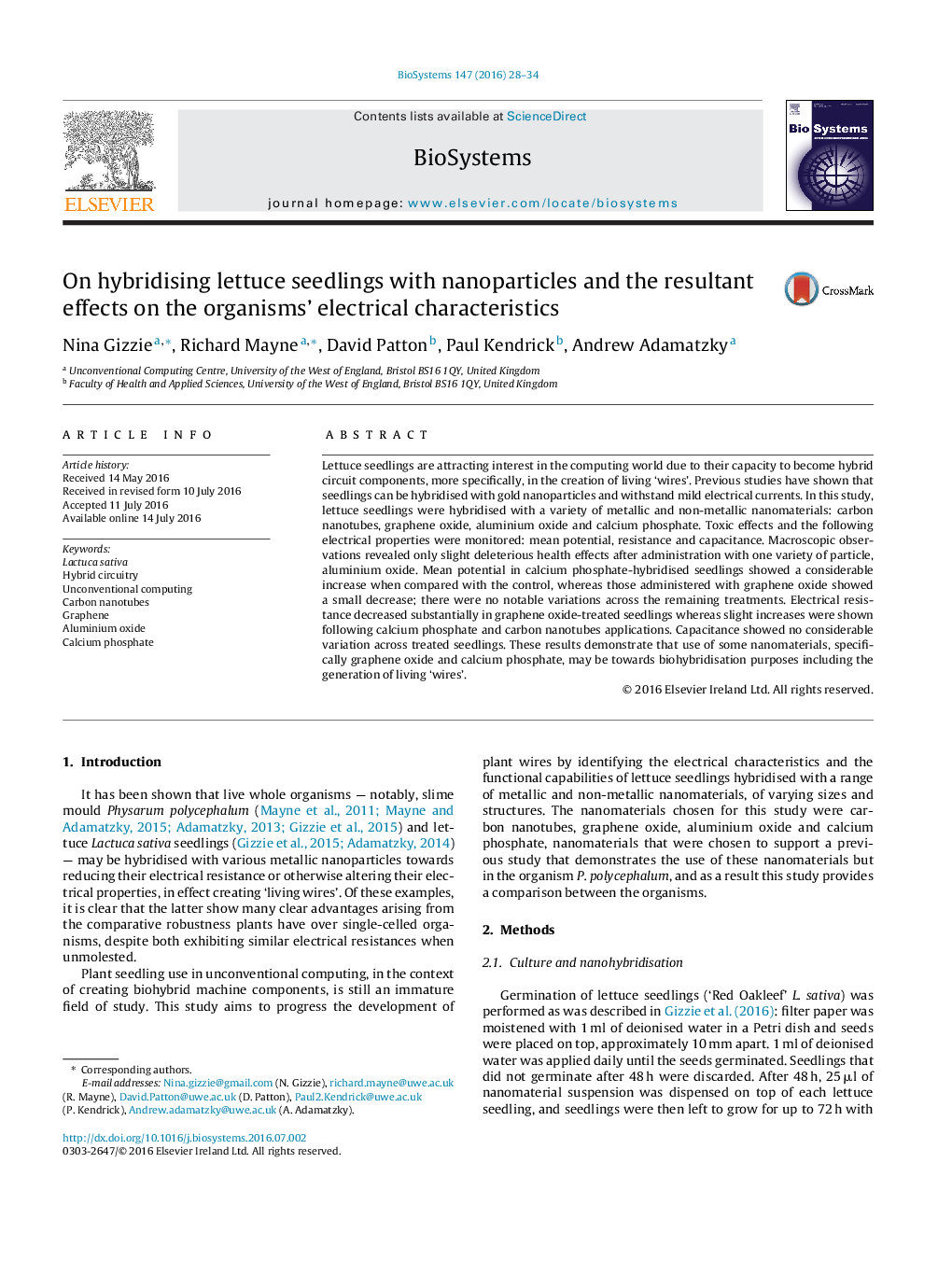| Article ID | Journal | Published Year | Pages | File Type |
|---|---|---|---|---|
| 8406751 | Biosystems | 2016 | 7 Pages |
Abstract
Lettuce seedlings are attracting interest in the computing world due to their capacity to become hybrid circuit components, more specifically, in the creation of living 'wires'. Previous studies have shown that seedlings can be hybridised with gold nanoparticles and withstand mild electrical currents. In this study, lettuce seedlings were hybridised with a variety of metallic and non-metallic nanomaterials: carbon nanotubes, graphene oxide, aluminium oxide and calcium phosphate. Toxic effects and the following electrical properties were monitored: mean potential, resistance and capacitance. Macroscopic observations revealed only slight deleterious health effects after administration with one variety of particle, aluminium oxide. Mean potential in calcium phosphate-hybridised seedlings showed a considerable increase when compared with the control, whereas those administered with graphene oxide showed a small decrease; there were no notable variations across the remaining treatments. Electrical resistance decreased substantially in graphene oxide-treated seedlings whereas slight increases were shown following calcium phosphate and carbon nanotubes applications. Capacitance showed no considerable variation across treated seedlings. These results demonstrate that use of some nanomaterials, specifically graphene oxide and calcium phosphate, may be towards biohybridisation purposes including the generation of living 'wires'.
Keywords
Related Topics
Physical Sciences and Engineering
Mathematics
Modelling and Simulation
Authors
Nina Gizzie, Richard Mayne, David Patton, Paul Kendrick, Andrew Adamatzky,
